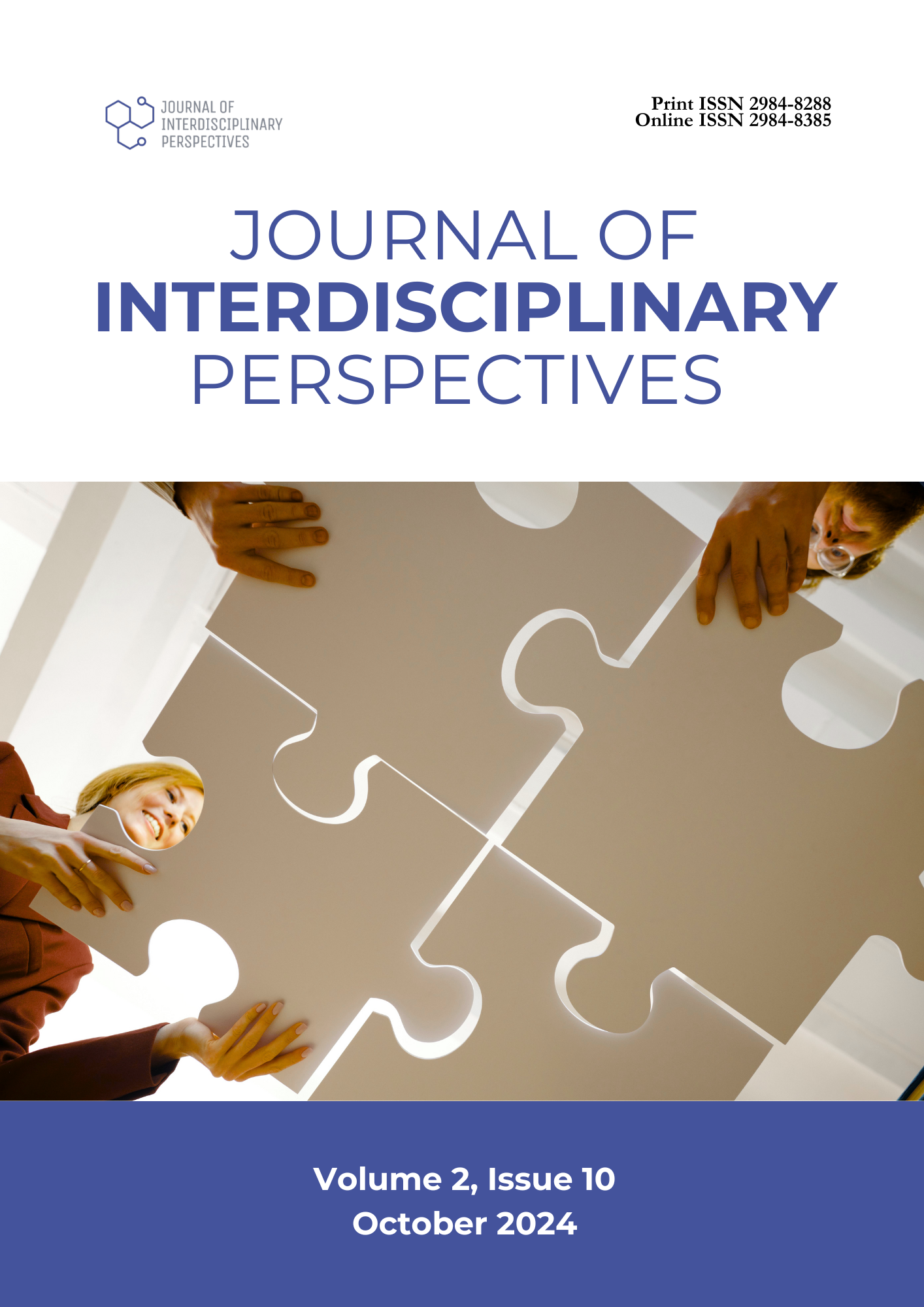Behind the Badge: Lived Experience of Drug Enforcement Agents in Law Enforcement
DOI:
https://doi.org/10.69569/jip.2024.0367Keywords:
Drug enforcement, Informant experiences, Law enforcement supportAbstract
The study delved into the real-life encounters of drug enforcement agents. It documented informant experiences in their duties, addressing related issues, and identifying needs to enhance their capabilities. The research employed a phenomenological approach within the qualitative methodology. Ten drug enforcement agents underwent in-depth interviews and focus group discussions guided by validated open-ended questions. The study commenced at Guihulngan City Police Station. Transcribed statements were analyzed to extract themes from individual experiences. Ten themes emerged: "The Windtalkers," "Service to Humanity's Value," "Lack of Logistic Support," "Challenges of High-Value Targets," "Race Against Time," "Inevitable Need for Prayer," "Collective Police Efforts," "Ingenuity in Achievements," "Training's Role in Victory," and "Logistics' Role in Warfare." There is a need to bolster support for law enforcement units, offer equitable training opportunities, emphasize effective law enforcement, encourage criminologists and researchers to contribute to enforcement practices, and encourage community cooperation in supporting law enforcement efforts.
Downloads
References
American Psychological Association. (2008). Electronic Resources. Retrieved from http://www.apastyle.org/elecref.html
Anderson, G.S., Litzernberger, R. & Plecas, D. (2002). Physical evidence of police officer stress. Policing: An International Journal of Police Strategies & Management, 25(2), 399-420. https://doi.org/10.1108/13639510210429437
Akerlof, G. & Yellen, J. L. (1994). Gang behavior, law enforcement, and community values. Retrieved from https://www.brookings.edu/articles/gang-behavior-law-enforcement-and-community-values/
Arambala, G. (2018). Radical leadership in Post-Parojinog Ozamis Politics. European Journal of Research, 11(0), 75–89. https://philarchive.org/rec/ARARLI
Chen, H., Schroeder, J., Hauck, R. V., Ridgeway, L., Atabakhsh, H., Gupta, H., Boarman, C., Rasmussen, K., & Clements, A. W. (2003). COPLINK Connect: Information and knowledge management for law enforcement. Decision Support Systems, 34(3), 271–285. https://doi.org/10.1016/S0167-9236(02)00121-5
Bradford, B., Jackson, J. & Stanko, E. (2009). Contact and confidence: revisiting the impact of public encounters with the police. Policing and Society, 19(1), 20-46. https://doi.org/10.1080/10439460802457594
Brady, S., Jayamaha, D., Brady, S., Fitzgerald, B., Fritz, J. (2010). Lessons learned from U.S. government law enforcement in international operations. Retrieved from https://www.loc.gov/item/2023692720/
Brereton, G. H. (1961). The importance of training and education in the professionalization of law enforcement. Journal of Criminal Law, Criminology & Police Science, 52(11), 111-121.https://doi.org/10.2307/1141511
Brown, D. E., & Hagen, S. (2003). Data association methods with applications to law enforcement. Decision Support Systems, 34(4), 369–378. https://doi.org/10.1016/S0167-9236(02)00064-7
Caulkins, J. P., & Reuter, P. (2010). How drug enforcement affects drug prices. Crime and Justice, 39(1), 213–271. https://doi.org/10.1086/652386
Celoy-Sagpaey, T. B. (2012). Police professionalism and morality: A Philippine national police revitalization guide (Master's Thesis). Benguet State University, Philippines.
Smith, J., & Charles, G. (2010). The relevance of spirituality in policing: A dual analysis. International Journal of Police Science & Management, 12(3), 320–338. https://doi.org/10.1350/ijps.2010.12.3.179
Charles, G. (2005). How spirituality is incorporated into police work: A qualitative study (Dissertation). Saybrook Graduate School and Research Center.
Chen, H. & Xu, J. (2005). Criminal network analysis and visualizations. Communications of the ACM, 48(6), 100-107. https://doi.org/10.1145/1064830.1064834
Chermak, S. M., Freilich, J. D., & Shemtob, Z. (2009). Law enforcement training and the domestic far right. Criminal Justice and Behavior, 36(12), 1305–1322. https://doi.org/10.1177/0093854809345630
Choi, M., Elko, B., Krentel, J., Lander, N., Valenti, A. (2009). Combatting the opium trade in Afghanistan. New Voices in Public Policy, 4(0), 1-35.
Cohen, L. & Felson, M. (1979). Social change and crime rate trends: A routine activity approach. American Sociological Review, 44(0), 588- 608. https://doi.org/10.2307/2094589
Cowper, T. J. (2000). The myth of the “military model” of leadership in law enforcement. Police Quarterly, 3(3), 228–246. https://doi.org/10.1177/1098611100003003001
Dangani, A.K. & Tamayo, M. B. (2017). Capabilities of anti-illegal drug enforcement operatives in Cavite, Philippines. Asia Pacific Journal of Education, Arts and Sciences, 4(1), 1-7. https://rb.gy/atx5b9
Deborah, O. (2006). Out of bound: Innovation and change in law enforcement intelligence analysis. Retrieved from https://apps.dtic.mil/sti/citations/ADA476634
Dulin, A. T. & Guadamor, M. L. (2017). Pulse and impressions of community residents on the illegal drug campaign of the Philippine National Police. International Journal of Advanced Research in Management and Social Sciences, 6(5), 1-15. https://garph.co.uk/IJARMSS/May2017/16.pdf
Ebling, P. (2002). Physical fitness in law enforcement: Follow the yellow brick road. FBI Law Enforcement Bulletin, 71(10), 1-5. https://rb.gy/vi7izr
Simbulan, N., Estacio, L., Dioquino-Maligaso, C., Herbosa, T., & Withers, M. (2019). The Manila Declaration on the drug problem in the Philippines. Annals of Global Health Journals, 85(1), 1-4. : https://doi.org/10.5334/aogh.28
Felbab-Brown, V. (2013). Despite its siren song, high-value targeting does not fit all: Matching interdiction patterns to specific narcoterrorism and organized-crime contexts. Retrieved from https://rb.gy/1vzfj6
Felipe (2017, January 30). AFP, PNP to hold prayer for unity vs drugs. Phillippine Star. Retrieved from https://rb.gy/ci1vkt
Figley, C. R. (1999). Police compassion fatigue (PCF): Theory, research, assessment, treatment, and prevention. In J. M. Violanti & D. Paton (Eds.), Police trauma: Psychological aftermath of civilian combat (pp. 37–53). Charles C Thomas Publisher, Ltd..
Fredrickson, B. (2000). Why positive emotions matter in organizations: Lessons from the broaden-and-build model. The Psychologist- Manager Journal, 4(0), 131-142. https://doi.org/10.1037/h0095887
Gal, M. (2004). The ecology of antitrust preconditions for competition law enforcement in developing countries. Retrieved from https://ssrn.com/abstract=665181
Gaines, J. & Jermier, J.M. (1983). Emotional exhaustion in a high-stress organization. Academy of Management Journal, 26(4), 567-586. https://doi.org/10.2307/255907
Geçer, E., & Mahinay, K. J. (2018). Uyuşturucu i̇le mücadele’ haberci̇li̇ği̇nde çerçeveleme: Fi̇li̇pi̇nler örneği̇. Akademik İncelemeler Dergisi, 13(1), 199–226. https://doi.org/10.17550/akademikincelemeler.357562
Hayeslip, D.W. (1989). Local level drug enforcement: New strategies. Retrieved from https://rb.gy/8b98k1
Hirschi, T. (1969). Causes of Delinquency. Berkeley, CA: University of California Press.
Hodgins, D. & Lightfoot L.O. (1988). A survey of alcohol and drug problems in incarcerated offenders. International Journal of the Addictions, 23(7), 5-6. https://doi.org/10.3109/10826088809058834
Howard, J. (2000). Informing America's policy on illegal drugs: What we do not know hurts us. National Academy Press.
Husserl, E. (1970). The idea of phenomenology. Nijhoff, The Hague.
Jaramillo, F., Nixon, R. & Sams, D. (2005). The effect of law enforcement stress on organizational commitment. Policing: An International Journal of Police Strategies & Management, 28(2), 321-336. https://doi.org/10.1108/13639510510597933
Joh, E. E. (2009). Breaking the Law to Enforce It: Undercover police participation in crime. Stanford Law Review, 62(1), 155-198. https://papers.ssrn.com/sol3/papers.cfm?abstract_id=1429162
John, T. & Maguire, M. (1995). Intelligence, surveillance, and informants: Integrated approaches. Police Research Group Crime Detection and Prevention.
John, T. & Maguire, M. (2006). Intelligence-led policing, managerialism, and community engagement: Competing priorities and the role of the national intelligence model in the U.K. Policing and Society, 16(1), 67-85. https://doi.org/10.1080/10439460500399791
Kanungo, R. N. (1982). Measurement of job and work involvement. Journal of Applied Psychology, 67(3), 341–349. https://doi.org/10.1037/0021-9010.67.3.341
Vredeveldt, A., Knol, J. W., & van Koppen, P. J. (2017). Observing offenders: Incident reports by surveillance detectives, uniformed police, and civilians. Legal and Criminological Psychology, 22(1), 150–163. https://doi.org/10.1111/lcrp.12087
Lasco, G. (2017). Kalaban: Young drug users' engagements with law enforcement in the Philippines. International Journal of Drug Policy, 52(0), 39-44. https://doi.org/10.1016/j.drugpo.2017.11.006
LaVan, H. & Welsch, H.P. (1981). Inter-relationships between organizational commitment and job characteristics, job satisfaction, professional behavior, and organizational climate. Human Relations Research Services, 34(12), 1079-1089. https://doi.org/10.1177/001872678103401205
Letwin, M.Z. (1990). Report from the front line: The Bennett plan, street-level drug enforcement in New York City, and the legalization debate. Hofstra Law Review, 18(9).
Torino, D., & Malinao, L.N. (2019). Lived experiences of anti-drug operation managers in the implementation of philippine nationwide anti-drug campaign tokhang: Focus on a rural setting. Journal of Educational and Human Resource Development, 7(0), 122–137. https://doi.org/10.61569/xfyvvz92
Maurer, M. & King, R. S. (2002). Distorted priorities: Drug offenders in state prisons. The Sentencing Project.
Mastrofski, S. D. et al. (1998). Systematic observation of public policy: Applying field research methods to policy issues. National Institute of Justice Researcher Report.
Mazerolle, L., Soole, D.W. & Rombouts, S. (2007). Street-level drug law enforcement: A meta-analytic review. Campbell Systematic Reviews, 2(0), 1-47. https://doi.org/10.4073/csr.2007.2
McGarrell, E. F. (2005). Strategic problem solving and project safe neighborhoods. U.S. Department of Justice.
Moore, T.J. (2008). What is Australia's "drug budget"?: The policy mix of illicit drug-related government spending in Australia. DPMP Monograph Series.
Murphy, M. J. (1965). Improving the law enforcement image. Journal of Criminal Law and Criminology and Police Science, 56(13), 105-108. https://doi.org/10.2307/1140609
Mutiarin, D. (2019). The war on drugs of Philippines and Indonesia: A literature review. Journal of Public Administration and Governance, 9(1), 1-19. https://doi.org/10.5296/jpag.v9i1.14355
Nunn, S. R. (2003). Seeking tools for the war on terror: A critical assessment of emerging technologies in law enforcement. Policing An International Journal of Police Strategies and Management, 26(3), 454-472. https://doi.org/10.1108/13639510310489494
Obrera, M. (2001). The professionalism of the Baguio City police office personnel (Master's Thesis). University of Baguio, Philippines.
Patterson, S. & Cooperrider, D. (2008). Green Mountain Coffee Roasters, A.I. Growth Summit Workbook. Retrieved from http://appreciativeinquiry.cwru.edu/
Perlmutter, D. (1962). Policing the Media: Street Cops and Public Perceptions of Law Enforcement. Sage Publications Inc.
Ponsaers, P. (2001). Reading about “community (Oriented) policing” and police models. Policing: An International Journal of Police Strategies & Management, 24(4), 470–497. https://doi.org/10.1108/EUM0000000006496
Ratcliffe, J. (2005). The effectiveness of police intelligence management: A New Zealand case study. Police Practice and Research Volume, 6(5), 435-451. https://doi.org/10.1080/15614260500433038
Romualdo, A. Q. (2018. Analytical functionality model: A drug-clearing operation intervention mechanism for the barangay anti-drug abuse council (BADAC). Journal of Government and Political Issues, 2(1), 43-54 https://doi.org/10.53341/jgpi.v2i1.38
Salazar, J. (2018). The Manila Killa: Duterte's drug war continues (Master's Thesis). San Franciso State University.
Schaulfeli, W. B. (2001). Work and health: The quest for the engaged worker. Journal of Applied Psychology, 36, 422-428.
Sonnentag, S. (2003). Recovery, work engagement, and proactive behavior. Journal of Applied Psychology, 88(0), 518-528. https://doi.org/10.1037/0021-9010.88.3.518
Skolnick, A. A. (1994). “Collateral casualties” climb in drug war. JAMA: The Journal of the American Medical Association, 271(21), 1636. https://doi.org/10.1001/jama.1994.03510450008004
Tait, R. N. (2013). The Role of Prayer Coping and Disclosure Attitudes in Posttraumatic Outcomes Among Iraq and Afghanistan Veterans. Dissertation Publishing.
Taylor, D. B., Hallam, C., Allen, R. (2009). The incarceration of drug offenders: An overview. Retrieved from https://www.beckleyfoundation.org/resource/the-incarceration-of-drug-offenders-an-overview/
Vecchi, G. M. (2002). Hostage/barricade management: A hidden conflict within law enforcement. FBI Law Enforcement Bulletin, 71(5), 1-7. https://doi.org/10.1037/e312532004-001
Vroom, V. H. (1964). Work and motivation. New York: Wiley.
Weisburd, D. & Eck, J. E. (2004). What can police do to reduce crime, disorder, and fear? The Annals of the American Academy, 593(0), 42- 60. https://doi.org/10.1177/0002716203262548
Woodward, R. (2000). Warrior heroes and little green men: Soldiers, military training, and the construction of rural masculinities. Rural Sociology, 65(4). 640-657.1 https://doi.org/10.1111/j.1549-0831.2000.tb00048.x1
Downloads
Published
How to Cite
Issue
Section
License
Copyright (c) 2025 Journal of Interdisciplinary Perspectives

This work is licensed under a Creative Commons Attribution-NonCommercial 4.0 International License.








